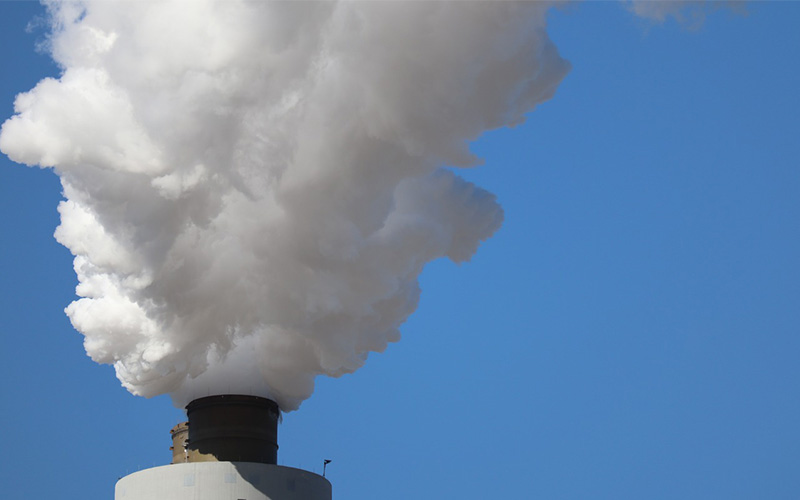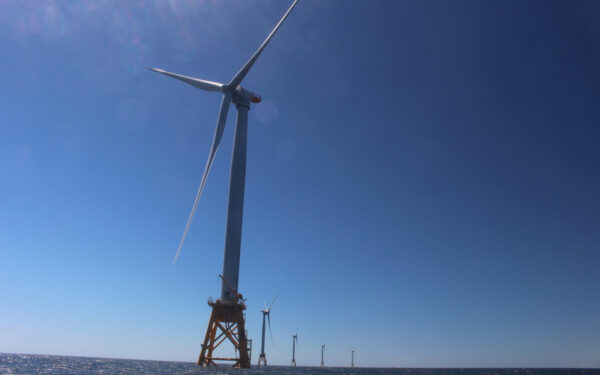
Most of New England's incinerators should have shut down years ago due to their age. The longer they hang on, the higher the health and environmental risks. Photo: Pixabay
Home to 16 active trash incinerators, New England has been burning its waste for decades, harming our communities and damaging our climate in the process.
The rationale behind burning our trash may seem sound on the surface. Proponents argue that it diverts waste from landfills, and the energy produced by incineration can be used to power homes and businesses.
The reality is, burning instead of burying our waste is simply trading one bad idea for another. And, the “renewable energy” produced? It’s far from sustainable, and the incineration process contributes to climate change by releasing more carbon dioxide per unit of electricity generated than a coal-fired power plant.
Yet New England continues to rely heavily on this outdated way of disposing of trash. Connecticut, which is home to five waste incinerators, and Massachusetts, home to seven, burn more household waste per capita than any other state in the U.S.
What’s more, most of New England’s incinerators should have shut down years ago, simply due to their age. The longer they hang on, the higher the risks – from accidents, mechanical failures, and increased costs for routine maintenance. And as incinerators age and break down, they pollute more – posing serious health threats to neighboring communities.
Rather than repeatedly placing band-aids on what’s already broken, it’s time to push for long-term, sustainable solutions that positively impact our communities and environment.
Aging Incinerators are Dangerous and Unreliable
Incinerators typically have a lifespan of about 20 to 30 years, yet all 16 incinerators in New England are more than 20 years old – and 13 have been operating for three decades or more. As incinerators limp on past their lifespans, they are prone to increasing equipment failures, fires, and other accidents. Massachusetts’s Wheelabrator Saugus facility – the oldest incinerator in the region at 35 years old – has suffered three fires in four years, with the most recent barely a year ago in November of 2018.
Such fires pose a danger to workers, as well as the men, women, and children living nearby. These blazes often create foul-smelling, toxic smoke that disperses into neighborhoods – sometimes, for hours on end – making it difficult for residents to breathe and burning their throats in the process. What’s more, breathing in toxic smoke for such long periods of time can lead to long-term health issues.
As Maintenance Costs Soar, We All Pay the Price
Keeping old incinerators operating is expensive – and those costs get passed on to the cities, towns, and residents that rely on incineration to dispose of their waste. Because maintaining and upgrading old incinerators requires significant investment, the fees to use these facilities are considerably higher than the costs of zero-waste alternatives, such as recycling and composting.
Hartford, Connecticut’s 31-year-old incinerator – with its history of equipment failures and unplanned outages – shows how these costs get passed on to taxpayers. For more than two months – between November 2018 and January 2019 – both of the incinerator’s turbines failed, shutting the facility down. The incinerator’s operator then charged the cities and towns that use the facility an extra 15% to offset the cost of the breakdown. (During its closure, the facility also violated state permits by storing more than 20,000 tons of waste onsite.)
The incinerator returned to full service in March 2019 – only to break down again in June. A proposed upgrade to the facility would cost $333 million – a price tag that would, once again, burden cities and towns. If the upgrade is approved, communities could pay as much as $140 per ton – up from $83 per ton – to dispose of their waste.
We pay the price in other ways, too. This summer, necessary maintenance forced the Wheelabrator Saugus incinerator to shut down one of its energy-producing steam turbines for three weeks. These repairs resulted in deafening steam-venting that forced neighbors indoors and kept them awake at night.
Ultimately, with incinerators dirtier and more expensive than alternatives, they represent an aging relic of a bygone era.
The More Incinerators Break Down, the More They Pollute
As older incinerators break down, they become even more problematic. This is because waste furnaces spew more pollution into the air every time they are shut down, fired up, or undergo maintenance.
During 2018, either or both waste furnaces at Wheelabrator Saugus were shut down for all or part of 89 separate days. On 32 of those days, emissions of dangerous carbon monoxide exceeded normal operating limits. Similarly, in 2018, the Covanta incinerator in Rochester, Massachusetts, shut down for 54 total days due to equipment failures, with emissions on 14 of those days exceeding the normal operating limits for carbon monoxide emissions.
The frequent breakdowns and malfunctions that come with aging incinerators are more than mere hiccups. They are dangerous emissions events. These repeated failures continue to raise concerns across New England for our health and our environment.
Historically Burdened Communities Bear the Brunt of the Pollution
Almost 80 percent of incinerators in the U.S. are located in environmental justice communities – defined as communities of color and/or low income. The story is no different in New England, as six of Massachusetts’s seven incinerators and three of Connecticut’s five are located in communities facing a number of environmental burdens.
Residents of these communities are already more likely to live in the shadows of a dirty industrial plant or next to a busy polluting highway. Forcing them to bear the health burdens that come with dangerous incinerators in their backyards is inequitable and unjust.
Moving Past Dated Technology and On to Zero Waste Alternatives
Aging incinerators present us with a choice. We can continue to spend money reconstructing aging technology that damages our climate and burdens our communities. Or we can divert the millions – if not billions – of dollars that would otherwise go towards propping up this broken system.
We would argue, there’s no choice to make. Option two provides us with an opportunity to invest in sustainable alternatives such as zero-waste programs, which conserve resources, save money, and support our communities.
Through zero-waste systems, like recycling and composting, we can reduce waste, lower climate-damaging emissions, save energy, and create more jobs than those provided by incineration – and at a lower cost. By pursuing zero waste programs, we can move past incinerators towards a healthier and more prosperous future.




